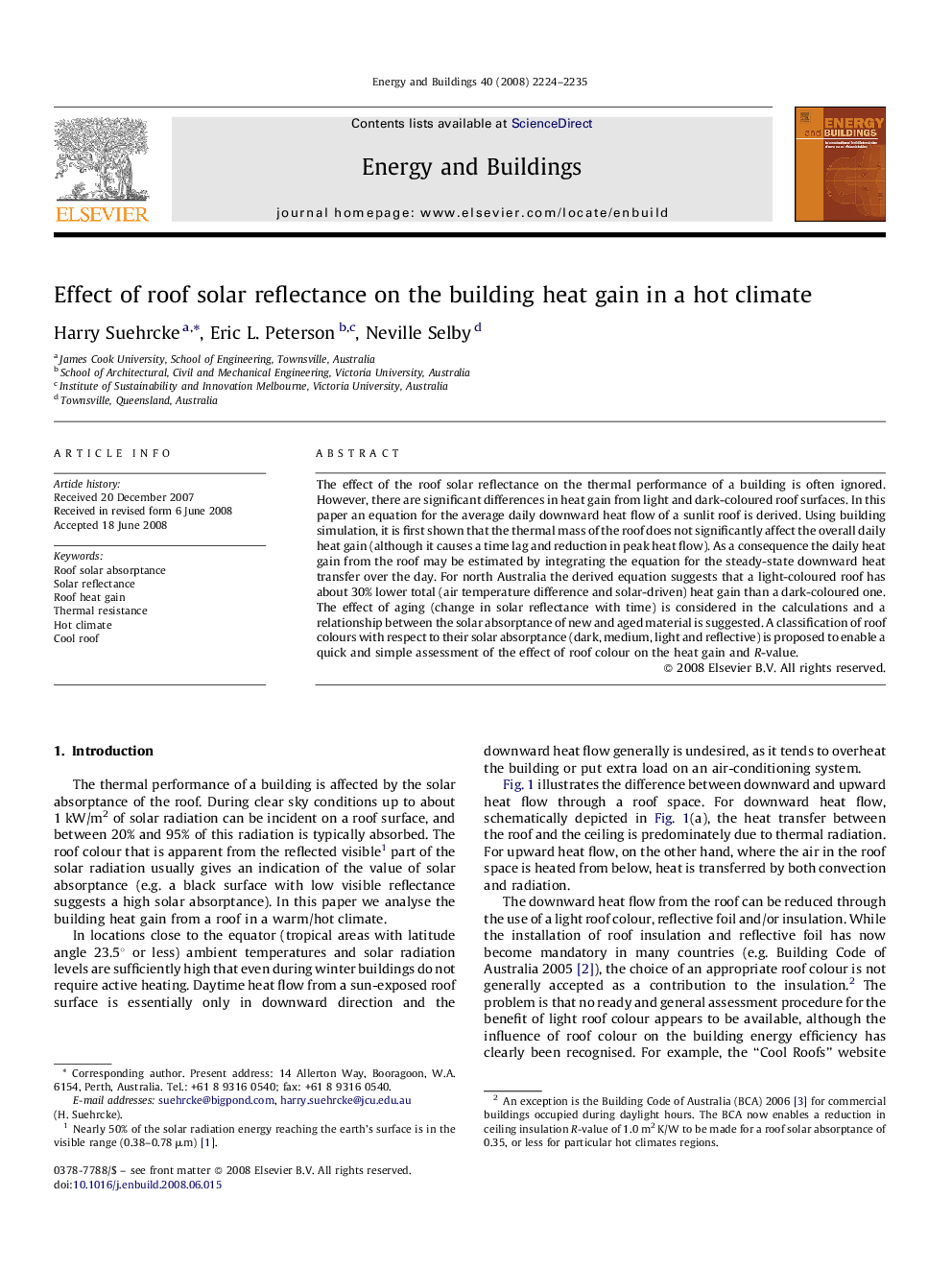| Article ID | Journal | Published Year | Pages | File Type |
|---|---|---|---|---|
| 264953 | Energy and Buildings | 2008 | 12 Pages |
The effect of the roof solar reflectance on the thermal performance of a building is often ignored. However, there are significant differences in heat gain from light and dark-coloured roof surfaces. In this paper an equation for the average daily downward heat flow of a sunlit roof is derived. Using building simulation, it is first shown that the thermal mass of the roof does not significantly affect the overall daily heat gain (although it causes a time lag and reduction in peak heat flow). As a consequence the daily heat gain from the roof may be estimated by integrating the equation for the steady-state downward heat transfer over the day. For north Australia the derived equation suggests that a light-coloured roof has about 30% lower total (air temperature difference and solar-driven) heat gain than a dark-coloured one. The effect of aging (change in solar reflectance with time) is considered in the calculations and a relationship between the solar absorptance of new and aged material is suggested. A classification of roof colours with respect to their solar absorptance (dark, medium, light and reflective) is proposed to enable a quick and simple assessment of the effect of roof colour on the heat gain and R-value.
